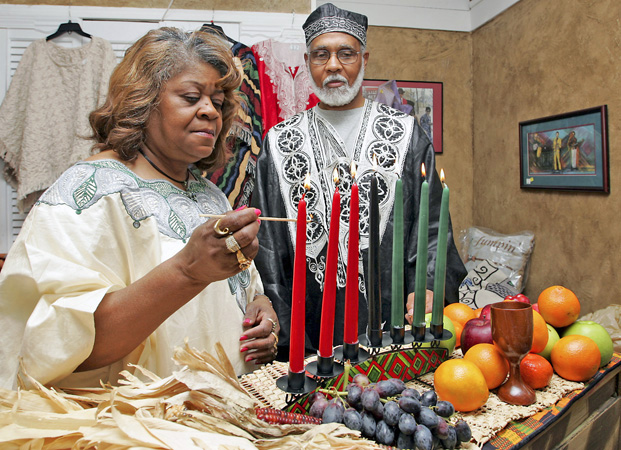To many people, Kwanzaa is just a funny word we hear around the holidays. Someone who feels very thorough in their winter greetings might wish you a merry Chrismahannukwanzakkuh. Or something.
But what is it? You might have had a quick lesson on it in elementary school, or seen a book about it at the library, opens a new window. But what are its origins?
Kwanzaa, opens a new window is a winter celebration based on a few key aspects of West African heritage, African American culture, and, interestingly, Hanukkah. It was created in the 1960s by an African American cultural nationalist, Maulana Karenga, opens a new window. The name comes from the Swahili expression "matunda ya kwanza," which means "first fruits of the harvest." It is not actually Swahili, though.
The seven day festival runs from December 26 to January 1 every year, and celebrates one of seven distinct principles of self-awareness each day: Umoja (unity), Kujichagulia (self-determination), Ujima (collective work and responsibility), Ujamaa (cooperative economics), Nia (purpose), Kuumba (creativity), and Imani (faith). For each of those days, a candle is lit on a special candelabrum called a kinara. Unlike the Menorah, the kinara's candles are lit from the center outward, until all the candles burn together.
At the height of Afrocentrism and the Black Nationalist Movement, Kwanzaa was a firmly-grasped tradition. In the mid-1990s, practice of it sort of reached its peak, but it is still taught in urban centers and less urban ones alike today.
The celebration of Kwanzaa is varied across the country. Some communities host roaring parties on the sixth night (which also happens to be New Year's Eve), while others quietly discuss the principles of self-reflection in their homes. Some of us who have learned about it will probably never celebrate it.
But it's good to know, right?


